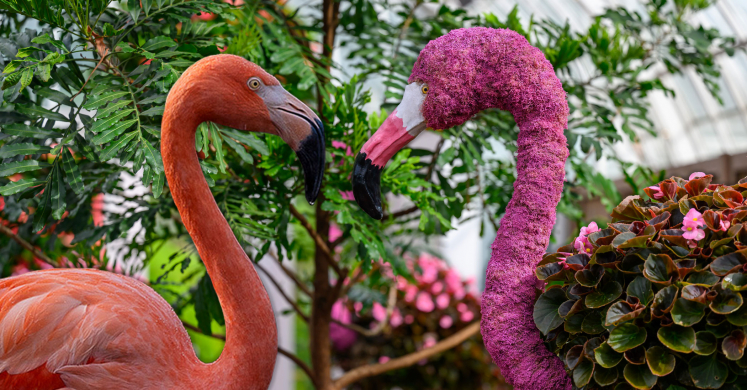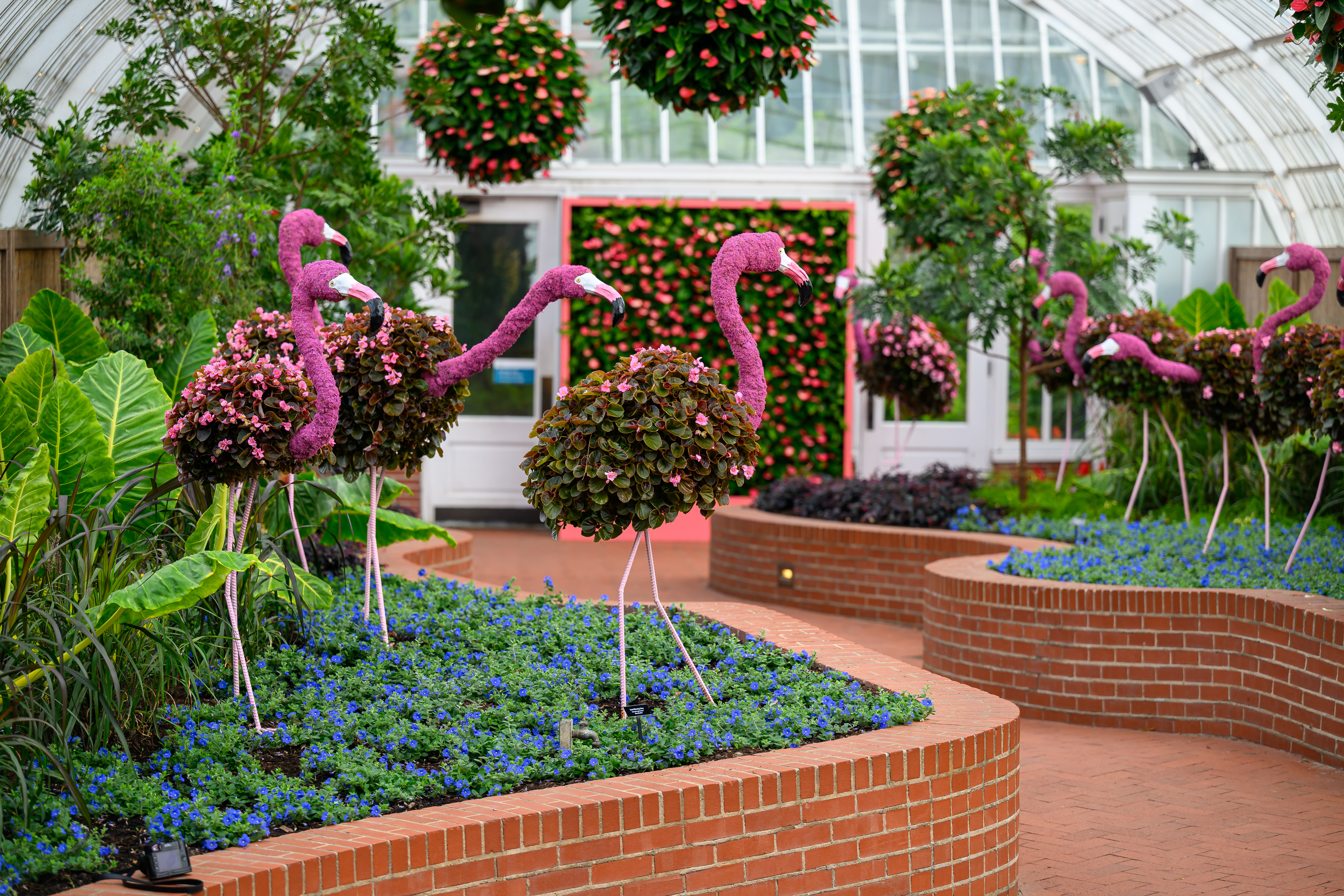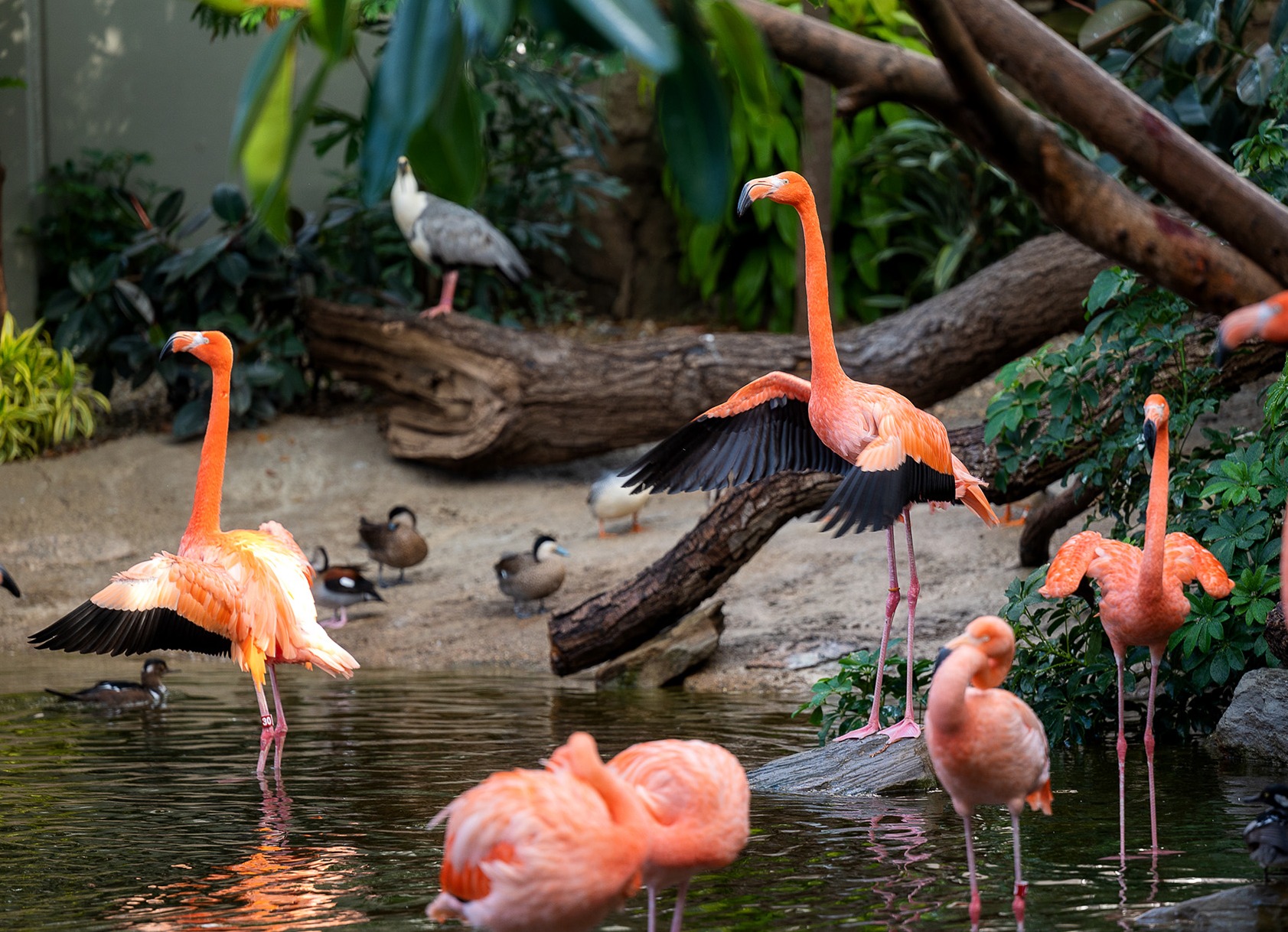Blog

Jungle Creatures and Fantastic Features: Flamingos
Phipps’ Summer Flower Show: Jungle Quest invites guests on a stunning safari bursting with terrific topiary animals, tropical foliage and beautiful blooms. With each room highlighting a show-stopping animal, let’s learn about how these creatures were constructed at Phipps and the actual creatures that inspired them!
In our Serpentine Room, you’ll find 15 pretty pink flamingos roaming throughout the room in varying poses. Although our talented Phipps staff can make a variety of topiary animals, they decided to call our friends at Franklin Park Conservatory in Columbus, Ohio for a loan! Back in March, Phipps staff picked up the painted flamingos from Franklin Park and then planted them with begonias when they arrived at the Conservatory. Throughout the duration of the show, horticulture staff must prune and deadhead the begonias to keep them looking fresh all summer long. In case any of the plants need to be replaced, there are backups in the Production Greenhouses that will ensure the flamingos stay in tip-top shape, maintaining their beautiful vibrancy!
With help from the National Aviary, we’ll look at how Phipps flamingos compare to the real-life creatures they represent! Experts from the National Aviary helped us to learn more about these unique beauties and what makes them so iconic. Let’s learn a little more about the flamingo! Did you know that there are six different species of flamingos around the world? These species include Greater Flamingo, Chilean Flamingo, Lesser Flamingo, Andean Flamingo, James’s Flamingo, and American (or Caribbean) Flamingo which can be seen at the Aviary! In the American species, the average adult is typically 5 feet tall, weighing up to 8 pounds.

When it looks like a flamingo’s leg is bending backwards, they’re actually bending their ankle joint which consists of two bones that bend like a hinge. Hidden by all the feathers on their bodies, a flamingo’s knee is higher up on their legs. They may stand on one leg for up to four hours at a time to conserve energy! This is a common characteristic amongst all birds but can be even more noticeable when these long-legged creatures do it. Often traveling in a flamboyance, or large flock, flamingos are extremely social creatures that typically live in habitats like lagoons and large shallow lakes with salty water.

Interested in learning more about flamingos and other birds at the National Aviary? This summer, become a world traveler and embark upon Global Odyssey: Avian Adventure. This one-of-a-kind international journey features new and exciting talks highlighting exotic environments and the unique species that inhabit them.
Stay tuned as we highlight more of our jungle inspired topiaries and their real-life counterparts to share interesting facts about their unique characteristics!
Photos © Paul g. Wiegman, Elliott Cramer

